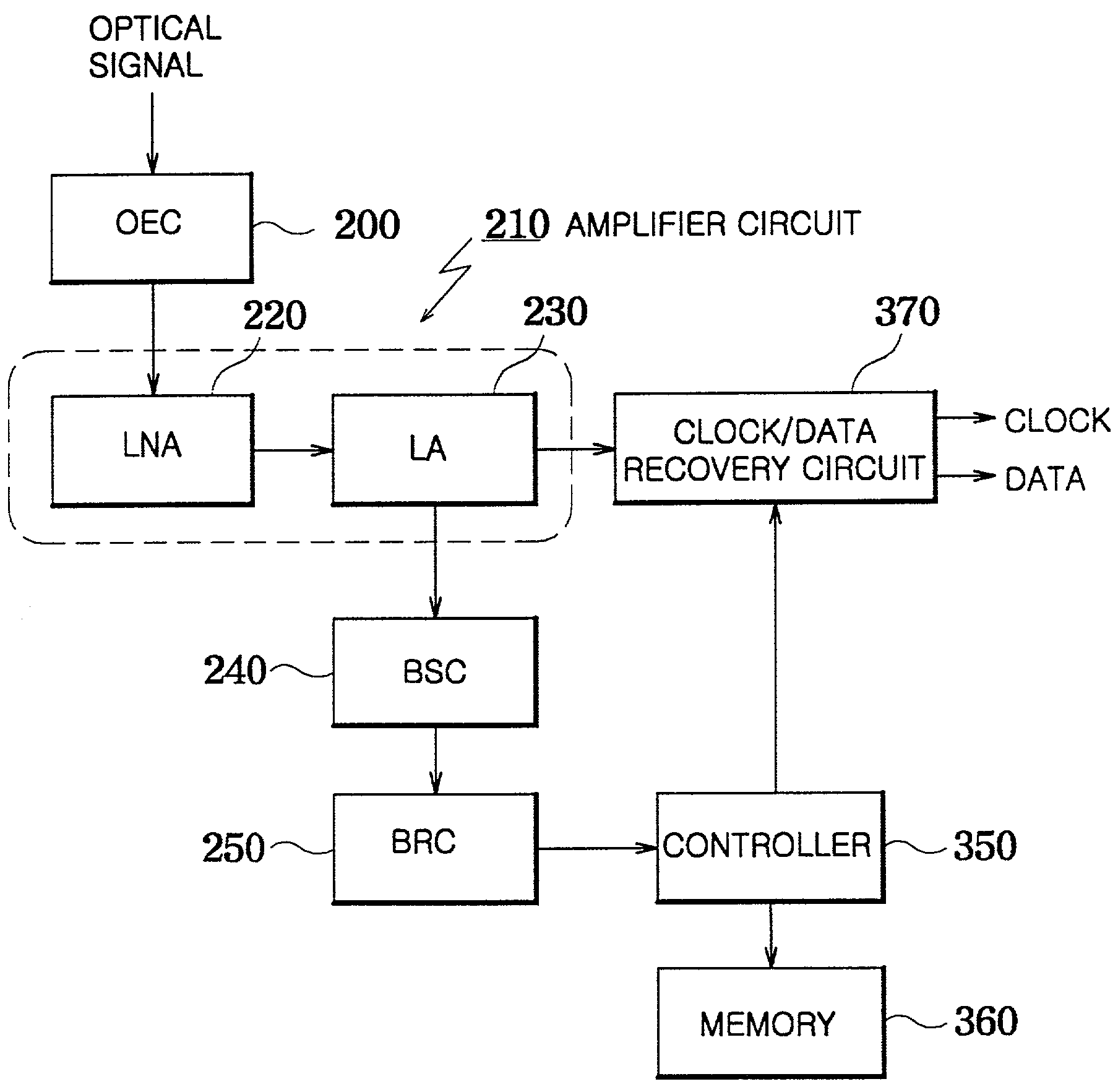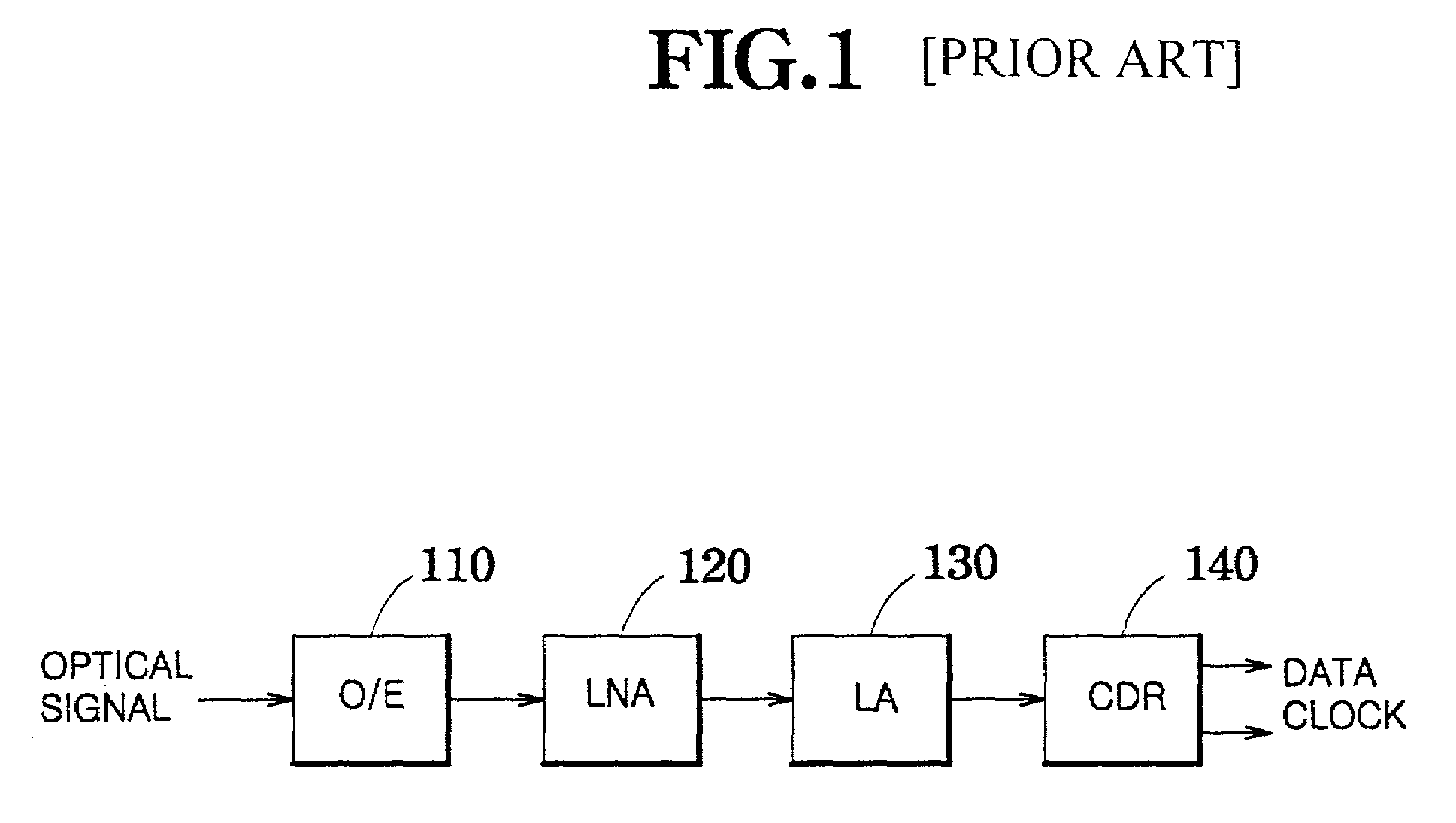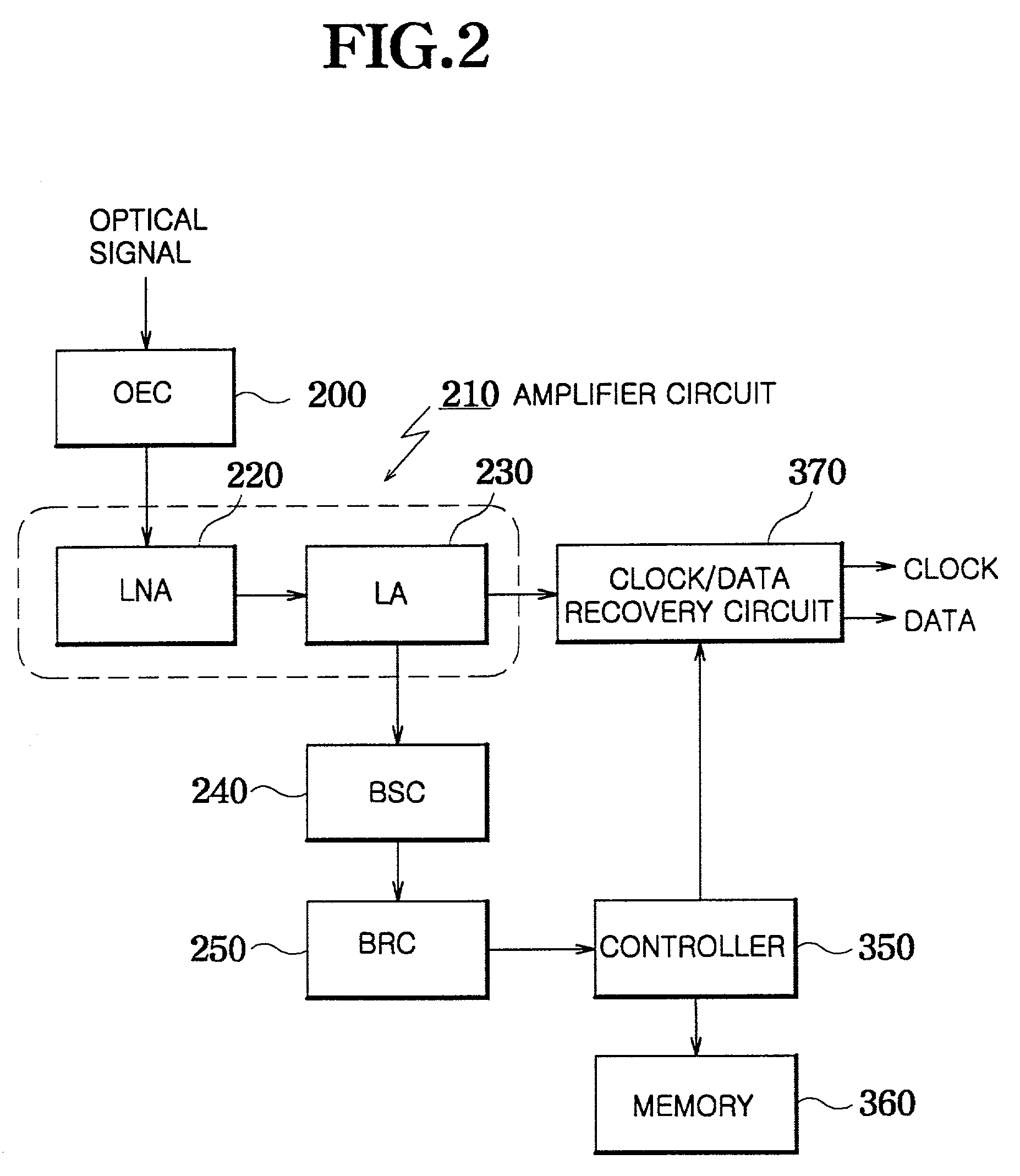Bit rate-independent optical receiver
- Summary
- Abstract
- Description
- Claims
- Application Information
AI Technical Summary
Benefits of technology
Problems solved by technology
Method used
Image
Examples
Embodiment Construction
[0026]In the following description, for purposes of explanation rather than limitation, specific details are set forth such as the particular architecture, interfaces, techniques, etc., in order to provide a thorough understanding of the present invention. However, it will be apparent to those skilled in the art that the present invention may be practiced in other embodiments, which depart from these specific details. For the purpose of simplicity and clarity, detailed descriptions of well-known devices and methods are omitted so as not to obscure the description of the present invention with unnecessary detail.
[0027]Referring now to FIG. 2, the optical receiver, according to a preferred embodiment of the present invention, includes an opto-electric converter 200, an amplifier 210, a bit rate-sensing circuit 240, a bit rate-recognition circuit 250, a clock / data recovery circuit 370, a memory 360 and a controller 350.
[0028]In operation, the opto-electric converter 200 converts an inp...
PUM
 Login to View More
Login to View More Abstract
Description
Claims
Application Information
 Login to View More
Login to View More - R&D Engineer
- R&D Manager
- IP Professional
- Industry Leading Data Capabilities
- Powerful AI technology
- Patent DNA Extraction
Browse by: Latest US Patents, China's latest patents, Technical Efficacy Thesaurus, Application Domain, Technology Topic, Popular Technical Reports.
© 2024 PatSnap. All rights reserved.Legal|Privacy policy|Modern Slavery Act Transparency Statement|Sitemap|About US| Contact US: help@patsnap.com










